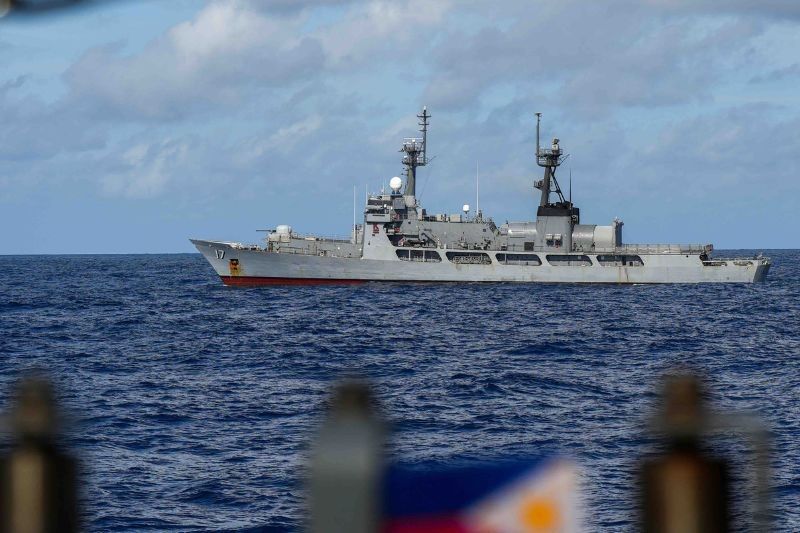U.S. carrier strike group, Philippine Navy conclude joint exercise in West Philippine Sea

MANILA, Philippines — The United States and the Philippines concluded their first Maritime Cooperative Activity of the year in the West Philippine Sea, which included the deployment of a U.S. carrier strike group.
The exercises conducted by the assets of the Philippine Navy and the United States Indo-Pacific Command (USINDOPACOM) started on January 17 and concluded on 18, the Philippine Navy said on Sunday, January 19.
Assets of the U.S. carrier strike group included the aircraft carrier USS Carl Vinson Carrier, USS Princeton, USS Sterett, an MH-60 Seahawk helicopter, a V-22 Osprey helicopter and two F-18 Hornet aircraft.
Meanwhile, the Philippine Navy deployed the BRP Antonio Luna, BRP Andres Bonifacio, two FA-50 fighter aircraft and Philippine Air Force Search and Rescue assets.
On January 17, the joint U.S.-Philippine naval assets carried out a communications check exercise, division tactics/officer of the watch maneuver and a photo exercise.
The activities continued on January 18 with dissimilar aircraft combat training.
In a statement, Armed Forces of the Philippines chief Romero Brawner said that these joint exercises enhance defense cooperation and contribute to the preparedness and effectiveness of both countries in addressing future challenges.
”This is a result of our shared commitment and mutual effort to safeguard our national interests, and secure a peaceful region,” Brawner said.
The exercises took place near Zambales waters on January 18, while the Chinese Coast Guard’s 'monster ship' was in the vicinity. In response, the Philippine Coast Guard issued radio challenges through BRP Gabriela Silang.
The drills also occurred in the West Philippine Sea, within the Philippines' Exclusive Economic Zone, where the Chinese Coast Guard and Maritime Militia have been encroaching.
This is a result of China’s non-recognition of the 2016 arbitral ruling under the United Nations Convention on the Law of the Sea, which declared that China’s nine-dash line has no legal basis.
- Latest
- Trending































